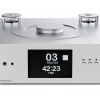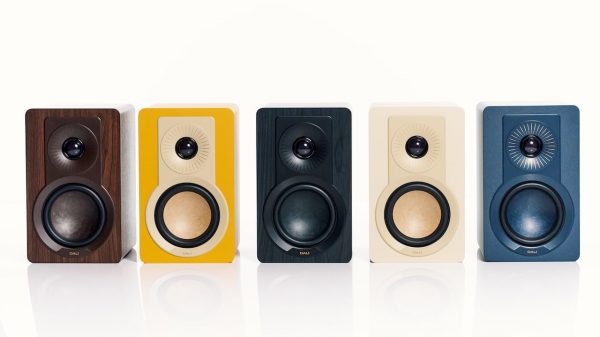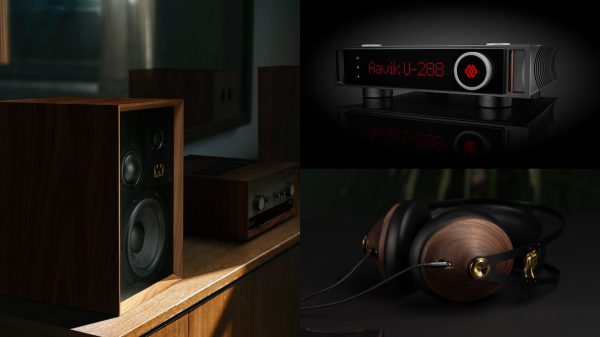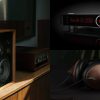Power. Unlimited Power. If you feel the urge to scream that like Emperor Palpatine, I won’t get in your way. If the Polk Audio L100 bookshelf loudspeakers have one flaw (and they don’t have very many), it is that they need power. They crave it. Like a Sith Lord with a bad case of skin acne.
It took some experimentation with power that some would deem unnatural (It’s going to be one of those columns) to get the Polk Audio L100 to really open up; but when they did it was obvious that my initial anxiety about them was seriously misplaced.
There are definitely some interesting changes afoot in both Maryland and California with the company. Polk Audio have been manufacturing high-end loudspeakers for over 40 years and very much like their rivals over at Klipsch Audio – they never stopped making high-end audio loudspeakers regardless of what some high-end audio magazine told you over the past decade.
Wait. What?
For some reason, that I’m sure has to do with a very short-sighted business strategy (or sucking up to other manufacturers), high-end magazines decided for almost a decade that neither Klipsch Audio nor Polk Audio made high-end loudspeakers.
I won’t even get into the politics of why magazines would pretend that the Klipsch Heritage loudspeakers stopped being audiophile-approved — but then suddenly there was an awakening with the release of the RP-600M, and every reviewer was willing to ditch everything for the opportunity to review the new Heresy IV, Forte IV, or La Scala AL5.

Polk Audio announced the very impressive Legend Series and I’ve only seen a smattering of high-end publication reviews. Kudos to Stereophile, Sean of Zero Fidelity, and The Audiophiliac (Steve Guttenberg) for taking the time to give these excellent loudspeakers a fair shake.
Polk Audio don’t make high-end loudspeakers?
I find your lack of faith disturbing.
Polk Audio released its Reserve Series speakers in 2021 which borrow a lot of technology from the L100 and its larger siblings and I’ve found it interesting to watch the YouTube video reviews of those speakers; do these reviewers honestly believe that the L100 are inferior?
I’m calling BS. Sorry but I’ve had a chance to listen to both and the superiority of the L100 was rather clear to me; both in terms of the build quality but also the overall sonic presentation.
You can find a link below to their technical details, but the Polk Audio L100 have one of the most interesting driver complements I’ve ever seen on a high-end bookshelf loudspeaker this affordable.
40 years of tweeter innovation, design and prototyping has led to the development of the new 1-inch Pinnacle ring radiator tweeter. One thing you will notice right away are the metallic tweeter spires that protrude outward from the radiator tweeter. Be careful around them and keep the kids away.
The ring radiator tweeter is set above a single 5.25-inch Turbine cone driver. The Turbine cone driver combines Polk’s proprietary foam core and the molded Turbine geometry which dramatically increases stiffness and damping.

On the rear of each of the cabinets is a rather clever port system. Polk’s explanation is that traditional bass ports create audible noise and mask low frequency bass information that you need to hear. The Enhanced PowerPort used on the L100 transitions air flow from the speaker into your listening area for louder, cleaner bass while minimizing turbulence, distortion, and port noise.
Three very unique pieces of engineering, but do they work?
I mentioned at the beginning that the Polk Audio L100 need power. I must confess that I’ve read some reviews that suggested that you can get away with 100 watts of power from “streaming amplifiers” – and become very confused.
The L100 are rated at 85 dB (4 ohms) and Polk recommends a minimum of 70 watts/channel with them. Let’s be clear – 70 watts of Class AB power.
The L100 cabinet is constructed of MDF that varies in thickness from 1″ to 1.5″ and is extensively braced. You can feel the quality of the construction when you give the loudspeakers a solid tap. The real wood veneer and hand polished baffle only add to the overall feeling that you’ve purchased a much more expensive loudspeaker for only $1,200.
To put together the best possible system around these excellent loudspeakers, I drove them with the following: Cambridge Audio Edge A, Rotel Michi X3, and Schiit Audio Ragnarok 2 integrated amplifiers.
The Ragnarok 2 makes the most sense from a budgetary perspective but I found that it didn’t have the grunt to drive the L100 well enough. It sounded great within its limitations, but the Polk loudspeakers needed more power.
The Ragnarok 2 integrated amplifier did a lot of things really well with the L100. My only issue was with the softness in the bass department; which is one of the best aspects of the Polk loudspeakers. They need something with more power and grip in the lower registers.
But enough about the power for the moment.

The L100 do 3 things exceptionally well; and better than most of the loudspeakers that are similar in size (13.6″ H × 7.8″ W × 11.3″ D) and under $1,500.
Bass response is deep and authoritative. Zero slop. If you enjoy electronica, techno, and anything requiring some low end punch, the L100s will not disappoint.
Compared to other bookshelf loudspeakers I’ve had here over the past 6 months including the Acoustic Energy AE1, Focal Chora 806, and Wharfedale EVO 4.2, the Polk Audio L100 demonstrated greater impact, dynamic capabilities, and outstanding imaging.
Scale was off the charts with the L100. Especially for a loudspeaker of this size.
The upper midrange and treble are on the lively side, but certainly not hard or etched. Clarity and detail are excellent even with its warmer tonal balance; with the right amplifier, vocals are warm but also reach out and touch you.
I think that’s what surprised me the most about the Polk L100; the level of engagement with vocals.
Sarah Vaughan, Sam Cooke, Natalie Merchant, St. Vincent, Fiona Apple, Nick Cave – the Polk L100s never gave an inch and let each performer leave everything on the stage and my heart racing.
They are not transparent in the way that a pair of Magnepan LRS open a window and you almost struggle to believe that it’s not real, but they definitely deliver vocals with texture, detail, and excellent imaging.
Two-way bookshelf loudspeakers are often criticized for not having enough power or authority and I understand that if you’re listening to large scale symphonic works – you can only bend the laws of physics so far.
The odd thing about the Polk Audio L100 is that they behave as if those laws don’t apply to them; the punch they deliver within reason (for their size and price) is incredibly impressive. I would love to hear these with some older solid-state amps from Mark Levinson or Threshold from the 1980s and see how they perform. Well done Polk engineers.
Conclusion

I’m perplexed by the response to the Polk L100s. They are built like tanks, the drivers are certainly not off-the-shelf products, and they make music erupt in your listening space. Polk Audio scored in Game 7 with these and unless you select the wrong amplifier, I’m pretty sold on the idea that they are one of the best stand-mount speakers available under $1,200.
Get the power right with these and give them a week or so to really open up. You might be as surprised as I was. The Polk L100 have flown under the radar for too long and while the new Reserve Series are getting accolades from those who have had the opportunity to try them, my gut tells me that the better cabinet puts some distance between the L100 and their less expensive siblings. Everything matters and I would spend the extra money on the L100 speakers if you can swing the extra cost.
For more information: polkaudio.com
Where to buy: $999.99/pair at Crutchfield.com





































Mike Cornell
July 19, 2021 at 12:01 pm
Ian, I’m wondering if the Schiit Vidar would have been a better choice (100 w 8 ohms 200 w 4 ohms AB), though I understand you’ve got to work with what you’ve got. From what I’ve heard, the Vidar’s bass control is off the charts. Anyway, great review and definitely a speaker to check out.
Ian White
July 19, 2021 at 1:45 pm
Mike,
The Vidar would be an excellent choice. I own a Ragnarok 2 and it’s not a great match from a power perspective. The treble and midrange sound great but the bass is way too soft.
The Vidar has a lot more power and low end control.
The Cambridge Edge A is a great combination but it’s $6,000.
Appreciate the feedback.
Ian White
Mike Cornell
July 19, 2021 at 4:33 pm
It’s funny, Ian….after my post I searched for Vidar on your site to see icy lid reviewed it and came across the original Polk review from March where you did in fact mention the Vidar as a good match! Any chance you’ll be reviewing the Vidar along with the Freya+ preamp? They’d make a good fit for your site as reasonably-priced system builder components.
Ian White
July 19, 2021 at 5:34 pm
Mike,
I would like to for that reason. It’s affordable in the context of a system I would build around the Polk L100s.
I have not really reached out to Schiit in awhile since our Loki+ review but I’ll see what we can do.
Ian
Larry
March 6, 2022 at 7:06 pm
I purchased the Polk L 100 last week on ebay. I use a Sansui Reciever 8080 from 1977.WOW the sound of these are deep thumping bass,I’ve had to turn down my Sub. The Sansui has plenty of power to drive these speakers. My listening room is 11×11,small but these speakers are almost too bold for this listening space.Nice imaging and drum bass is outstanding you can feel the thump. The volume control is at 1/4 and getting 4-8 watts per channel power. Very powerful speakers for the size and being a 2 way speaker
Ian White
March 6, 2022 at 7:10 pm
Larry,
I was very impressed with them. They can be too much in a smaller room but Polk designed these well.
I don’t think this series has done as well as Polk hoped which explains the release of the 3 other ranges that are less expensive.
Enjoy them!
Best,
Ian White